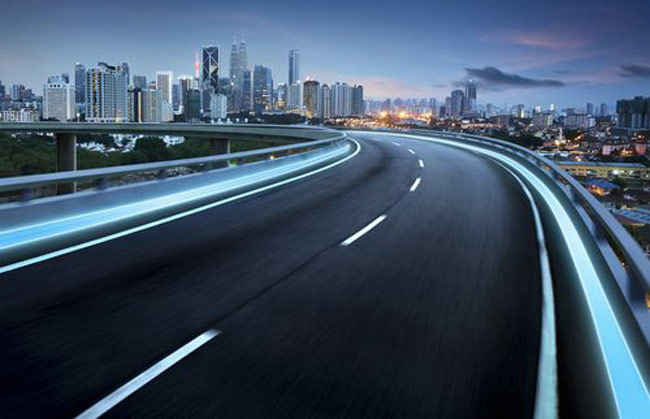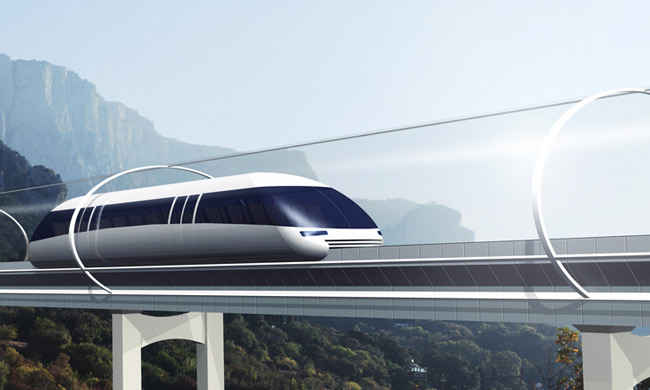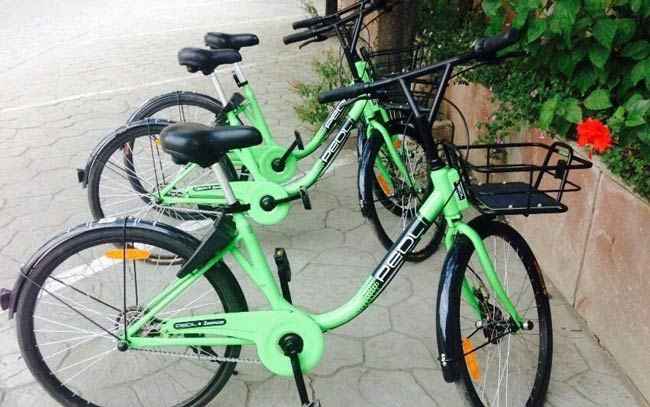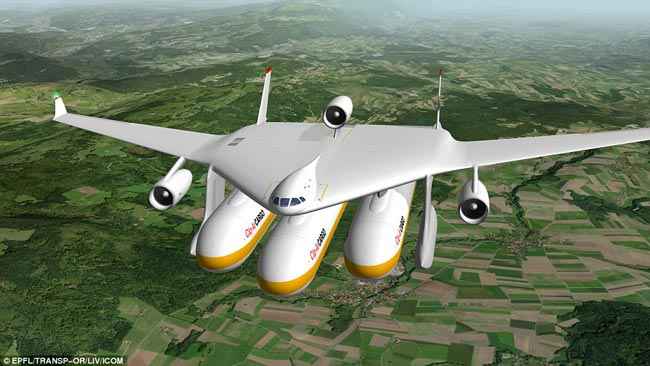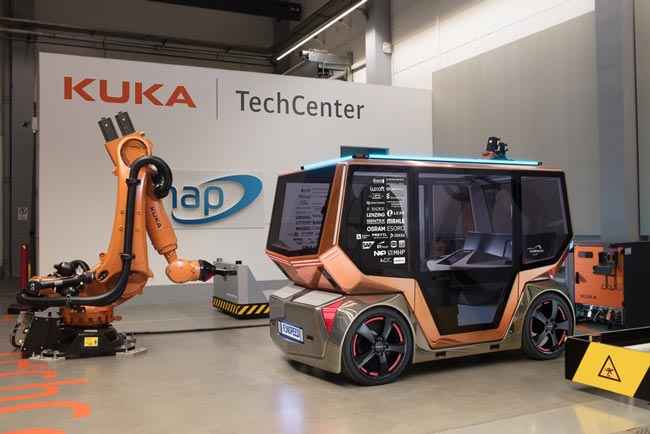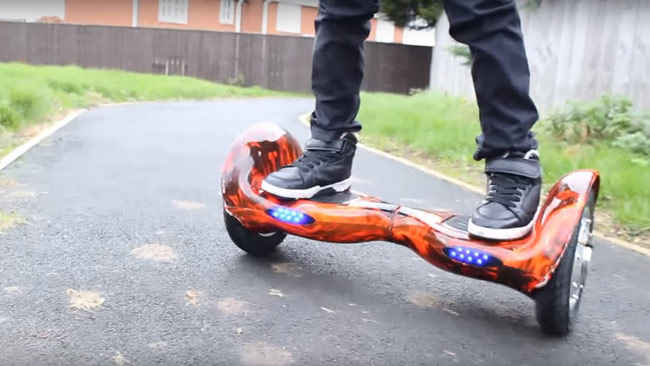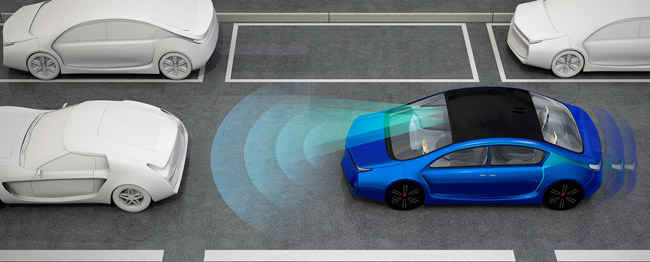18 urban transportation concepts for the future

As cities across the world grow, they get more densely packed, real-estate prices soar, roads get traffic-jammed, and governments are left dealing with problems of trying to ease congestion all over metropolitan areas. If you’ve ever been to one of our metro cities during rush hour, or even large cities across all states in India, you already know the problems we’re talking about. They say necessity is the mother of invention, and boy do we have necessities. Add to this mix the need to also consider the environment, and plan for greener transport methods, and we’re really stuck in a jam!
 Survey
SurveyWhile a decade ago we thought of carpooling, and what eventually became rideshare pooling as innovative, the idea really is to reduce the traffic on the road and get more people into public transport. Then there’s the problem of our weather, which means we usually need to be shielded from the elements, because if it’s not hot enough to fry you, it’s either cold enough to freeze you, wet enough to drown you or humid enough to make you want to retire!
1. The Caterpillar Train
Let’s face it, how we get to places is by road, and we know how to. If we make metros and monorails, but space them all out, often we end up dropping off people too far from their intended destinations. It’s expensive to build things like metros closer and closer together because they cost a lot in terms of infrastructure. So what if there was a way to run small trains along all major roads? In order to not disrupt traffic, we’d need to run the trains either above or below the road, and we know that below is not really an option in most cities. When it comes to above, it usually ends up costing too much because you have to construct the equivalent of a metro line. But what if you didn’t have to, and instead of thinking big, what if you thought smaller? That’s exactly what an Indian engineer did back in 2016 when he came up with the caterpillar train idea. Ashwini Kumar Upadhyaya, an Indian Railways engineer who was on study leave while earning a PhD from MIT collaborated with another PhD student, Emil Jacob to come up with the system.
2. Night Owls
This one isn’t much of an innovation; it’s more common sense. Not all ideas can be one solution to fix all woes, and often we just need to use multiple solutions together. One of the biggest problems with road traffic is that larger vehicles can end up slowing down the flow of traffic. In India, where we don’t always have proper loading and unloading zones for businesses, we often make up for it by using manpower. Have you ever been caught behind a truck that blocks off a small road as it unloads wheat or flour for a small business? You see the poor delivery men rush to carry the heavy loads on their backs and complete the delivery job in minutes, while angry commuters stuck behind them honk like mad, and increase noise pollution and raise blood pressure levels? All of that can be a thing of the past if we’d mandate all deliveries of large goods to happen between midnight and 4 am. The roads are relatively empty at that time, there’s not too much traffic to hold up, and in fact, theoretically, you could have fewer but larger trucks deliver the good, saving on transport costs. Of course, someone would need to be awake at night to receive the goods, but manpower is certainly the least of our problems…
3. The Internet of Roads
We have an internet of everything, so why not roads as well? And there’s nothing fanciful or impossible about doing this, the technology is already available. Essentially, an IoR would network all roads together, use big data to analyse problems, find better routes and plan traffic movement better. While you may use Google Maps, for example, to find the right path home, and to avoid traffic jams (as far as possible), imagine a city with completely networked roads that have real-time monitoring, and smart traffic signals. If you and a thousand other people suddenly ask a mapping service for directions from point A to B, an IoR city could send you all the same way, and make sure your paths were cleared so that you could reach quicker. It would beat the guesswork we’re doing right now, or the roulette we play on a daily basis. Plus, accident reporting, breakdowns, potholes, all of these would be automatically reported to the authorities and suitable action could be taken. Plus of course, big data sometimes reveals learnings that cannot be just intuited by the human brain, so properly tracking all traffic could yield some interesting AI solutions for traffic management.
4. Hyperloop and others
One of the most important ways of ensuring that congestion eases is to increase the affordability, speed and reliability of transport from suburbs that are further away from the centre, or even connecting nearby cities. For example, if people could travel to the heart of Mumbai from the nearby city of Pune in under an hour, and without it costing an arm and a leg, you can bet more people might decide to stay there. Heck, there are already people who undertake the 4- to 5-hour journey (depending on traffic) on a daily basis to come to work. Doing things like this improves quality of life, as people are able to stay further away from big cities, and thus afford more spacious homes instead of living in tiny rooms just to be close to work. It also cuts down on private cars being used, which is always a good thing to do. The Hyperloop is just the most promising example of high-speed transport that might be affordable for at least middle to high-level executives in corporate companies – you know, the types that either drive their own car with a single occupant or have a driver drive them about.
5. Congestion Charges
This is a no brainer. Want to reduce automobile traffic in a big city, start charging congestion charges. London, for example, has had this for years (since 2003), and basically what it does is demarcate a zone in London called the Congestion Charge Zone (CCZ), and between 7 am and 6 pm on weekdays, it charges cars a standard charge of £11.50 (about 1,000 Rupees) for every day it is spotted in this zone. The system uses automatic number plate recognition and CCTV cameras to bill each car, and there are heavy fines if you don’t pay, and even loss of licence. London exempts electric cars from this charge, as a way of encouraging more people to buy greener cars and reduce emissions. In 2025, even that exemption will be removed, in order to encourage all travellers to use public transport – even those who own electric cars. The revenue raised from this exercise is put to use improving the public transport system. Seems like a no brainer, doesn’t it? There are also other methods used by various cities across the globe to encourage the use of public transport. Some raise the parking fees in a way that discourages people from wanting to drive. Perth, Australia, for instance, has a large parking area just outside the main city, with cheap parking, and then free bus transport within city limits for everyone. This helps keep the Central Business District free of too much traffic. Of course, our crowded cities are much more complex, and thus we would probably need a combination of this and the next idea.
6. Bicycles
There’s nothing like riding bicycles for short commutes, providing the infrastructure allows for it. Cycles are cheap, they’re zero emissions, improve the health of the population as they qualify as exercise… in essence, they’re almost the perfect solution. Many cities around the globe have set up bike rental services, which allow you to find the closest bike parking bay, use an app to pay to rent a bike, and then cycle to the parking bay that’s closest to your destination, return the bike and walk the short distance to your final destination. For India, however, this would need to be assisted with cycle only lanes, protected from car drivers who are in a hurry or will flout the rules. A barricade separated bike lane that prevents both cars and pedestrians from entering would certainly encourage more people to cycle short distances, as in most of our traffic-jammed cities we spend more time stationary in cars than moving. Of course, there would have to be checks against misuse, theft or vandalism of rental cycles, but it’s nothing CCTV and good policing hasn’t fixed in other places.
7. Cable cars
Hear us out. We know cable cars are primarily thought of as a fun ride, or to go up or down mountains, but they can also be put to better use. If planned right, cable cars are a one-time investment that can help transport small groups of people across a city, pretty high up in the air, and thus away from all of the hustle bustle of regular city life. Plus, talk about taking the scenic route! Chicago had plans to make a transparent cable car network, but it seems like it was more for tourism than people moving, however, imagine in crowded cities like Mumbai and Delhi, if all building contracts handed out to buildings above a certain height (say 25 stories), made it mandatory for them to also build infrastructure for cable cars that the government could install? You could, literally, rise above the traffic. Talk about higher planes of existence!
8. Ticketless travel
A lot of time and energy is wasted with ticketing systems, which slows down the movement of people. If more systems were hop on and hop off, with easier ways of paying for public transport, it might help move people quicker, and free up more space which is currently used for long ticketing lines. This is where RFID, electronic passes and tap and go cards come into the picture, and they’re in use all over the world already. Here in India, we just need to standardise the payment methods for all government-owned transport and create passes that require less human interaction, not for the people who already own passes, but even for occasional travellers. Plus, a smart system might allow you to choose to pay for travel from point A to B, instead of from Station / Stop A to B. Think about it as you leaving your house in the morning, hopping into an auto or rideshare cab, tapping your card, jumping out at the station, tapping your card and getting on your train, then hopping off the train and jumping on a bus, tapping your card, getting off, jumping into another auto for the last km, and then getting off at your office… and all of that was charged a flat fee, every day, just like your metro/train pass is a fixed rate that’s cheaper than buying individual tickets.
9. Clip Air
Imagine a large tube filled with people. Yes, exactly like a passenger jet, except it is just the tube bit, no wings. That’s the Clip Air idea that emerged from Switzerland back in 2013. The idea was simple, find a way to get the same large tube to be transported by either air or rail. One can even extrapolate this to road or even sea (ferries for shorter journeys, not voyages) so that people could travel from one destination to another exactly as they do for air travel. The idea didn’t take off because it’s more suited for cargo than it is for people because it’s a lot easier to plan to send a big batch of cargo on a long journey that involves air and rail travel, but people don’t like sitting inside tubes for that long. The way we all jump up to get our bags the instant a plane's wheels touch the ground is a testament to how badly we all want to escape the tubes. However, smaller versions of this same idea, which are at the scale of one or two people, and instead of jet engines, large quadcopters to transport groups of twos are also being thrown out there. Imagine a self-drive service that’s essentially a capsule with wheels. It can be driven to a quadcopter port, where it’s attached to the copter and flown above the traffic and dropped off at another port. Then you proceed to drive to your local destination. Fancy, sure, but certainly possible.
10. Elevated bus systems
You have to have been living under a rock to not have seen the videos of this. Much forwarded on social media and chat apps, we’ve all seen the video of the raised bus that drives over the traffic congestion below. As much as we all want this, it will require a lot of infrastructure to be put in place, and isn’t as simple as it is made out to be in the videos. Still, it certainly is possible for upcoming cities and towns, and would certainly make bus travel a lot faster. Also, since it goes along the same roads and routes, it would certainly be very convenient for most people to travel. Unlike in the videos, where traffic is expected to be considerate of the bus system, something tells us an Indian solution would need the tracks for the bus to be shielded by concrete barricades, to ensure traffic cannot block the bus. Certainly possible, but would need one city in India to cough up the initial investment and play guinea pig for the experiment. Think it will ever happen?
11. Driverless Autorickshaws?
This is an idea that’s inspired by the driverless pods in London’s Heathrow airport. Set inside barricaded lanes, these driverless pods transport people from the business flier parking lot in Heathrow to the airport. It’s meant for people who drive to the airport, park there, and then take a short business flight to somewhere else, and then return either the same day or within a day or two. The costs are recovered from the parking fees, and it has reduced travel time by over half. Plus, they’re electric, and thus green. Now, imagine these driverless pods buzzing about our streets the way autos do, except, they’d be behind barricades, and have a dedicated path with junctions where one could turn off in different directions. Instead of dropping you off to your exact destination, it would drop you off somewhere close by, but it would be a painless journey. Being driverless, it would also do away with the hassle of autos refusing to go where you want them to, which in turn ought to keep your blood pressure in check.
12. Human power?
Any technology that uses human power is preferred because it’s obviously green, and as we’ve mentioned before, healthy for the general population. Just like the driverless autorickshaws before, imagine a human-powered monorail system, which had small, one-person pods. We’d jump in, and pedal from one station to another, and of course, it would be nice and high up in the air, so it would be scenic and fun. Using junctions and stations we could hop on and hop off monorail lines, depending on which way we were headed. Since the pods would be light, and they’re meant for single people (and maybe a small child on board as well), the infrastructure would be easy to set up, and not large eyesores in the sky that metros are. Plus it’s totally green and noiseless! There’d be some planning required to figure out where and how to put junctions and also plan for safety and emergencies, such as someone getting exhausted and not pedalling anymore, and holding up traffic… but it could be done!
13. More modular systems
Don’t like the idea of monorail pods? What if they were single cycle modules that you could own or rent? What if you could join up three or four or 10 of the pods, based on a common destination, and have them turn into a van, which is then driven to a location that’s close to every pod’s destination, then split and everyone pedals to where they want to go. What if the pods were electric instead of needing pedal power? Would that change your mind? The power of modular systems is something we need to explore. Imagine how less irritating a rideshare would be if you were in your own little cocoon, which you could then also use to drive for short distances to work. Changed your mind and don’t want to go by road? Just drive your pod to a monorail station, and have it slot perfectly into the system and be transported, with hundreds of other pods, to the next station. Standardisation and modularity can finally bridge the gap between personal and private transport, and though it may seem like a pipe dream, it will eventually take off in some city somewhere. We can only hope it’s a city in India that adopts it.
14. Sharing
Something we in India hate to do is to ride share, pool, or rub shoulders with others. The reason public transport doesn’t appeal to those who can afford private transport is this tendency to want isolation. It’s normal, in a crowded country with nearly 1.4 billion people, can you blame people for wanting to be isolated the minute they can afford it? This is why there is a need for more intelligent apps that match people better and allow them to carpool. We also need governments to encourage it with policy, some of which we’ve mentioned earlier in this article. However, imagine if you could hold meetings in a carpool because an app figured out that you and some person you are scheduled to meet happen to live or work close to one another as well? Imagine if you could carpool with other fans of your favourite football club? Friends? People who work in the same line as you? While we’re all a little anti-social in public transport, we can find camaraderie if we’re matched to one another the way dating sites match people. Heck, while we’re talking of that, imagine a carpool date on your way to work? Yes, you’d have to give up your privacy, and sure, there’d be a few creepy encounters for sure, but worth a try maybe?
15. Jetpacks and hoverboards?
While jetpacks being in a whole load of complications, such as mid-air collisions that result in humans falling to their deaths, they can be limited for height, and essentially made into hoverboards. Same concept as a lot of travel tech we’ve listed in this article: create a walled pathway for them, and let people travel at speed using hoverboards. Even electric skateboards and smaller, cooler versions of Segways can be thrown into this group. What we’d need are smooth roads and easy ways to rent these things, and a lot of users wouldn’t mind what’s essentially assisted walking, or powered walks.
Coming back to jetpacks, they’re currently able to hit speeds of 150 kmph and can fly for 15 minutes flat out on a single tank of kerosene. Improvements are coming, but jetpacks might be good for crossing a large river or lake, or a small bay (water bodies, basically). However, something tells us they’re going to appeal only to the adventure sports types.
There are other ideas about how to move masses on foot, such as large walkalators/travelators, but the cost of building travelators for thousands of people to use simultaneously (as will happen in India) is too large.
Overall, this one might be the least promising of all the ideas here, but enough people are bound to want to use hoverboards or powered walking devices, just for their coolness factor, which makes it a viable alternative for the few, if not the many.
16. Norway’s floating tunnels
Many of our coastal cities have road networks that wind along the coast because roads straight across water bodies are expensive to build and maintain. No country knows this better than Norway with their network of fjords that make for awesome scenery but are a nightmare for road planners. In order to cut down travel time and better connect their cities, Norway is undertaking a 47+ billion dollar revamp of their highways, and some of the solutions involve floating tunnels! Yes, they’re as cool as they sound, and you should watch the YouTube video from B1M we’ve linked to. That video is more detailed than anything we can explain here…
17. Driverless solutions
We’re not a big fan of driverless solutions here at Digit when it comes to India. We cannot see how AI could be good enough to handle our wild Indian driving styles, which most non-Indians consider to be sheer chaos. If we were to replace all cars with driverless automobiles in one fell swoop, then sure, there might be a case for driverless solutions in India. Since that’s never going to happen, we don’t think it will ever be possible to have them on our Indian roads. So why are we mentioning it then?
There are certain infrastructure projects being built, to transfer goods from one region to another. We even drill through mountains and hills to make roads, but we do it all for drivers. There is a case to be made for adopting driverless technology, but only from point A to B, on roads that are built for AI, and have no humans allowed. That’s certainly something our central and state governments can look into, and may even happen in a decade or two. We still don’t see humans and AI co-existing here though. In fact, many people think driverless solutions are less than ideal even for western countries with small populations!
18. Zero transport
Last, but not least, is the ultimate solution to the mass transit systems that we have all been craving for decades. It’s possible right now, many of us already use it (heck you’re using it now). Why travel at all? Telepresence research is taking off around the globe, and telecommuting is becoming widely accepted for a wide range of jobs. With AI and robotics threatening to replace all manual labour jobs, in a few decades, most of us will only have intellectually-driven jobs that do not require your physical presence on a daily basis. In such a scenario, we might find that the only highways you need are the information highway, and technology that ensures that you have a fast connection may be all you need when it comes to work.
This article, for example, was banged out on a keyboard at 4 am in Perth, Australia for India’s coolest technology media brand, by this writer, who telecommutes to Mumbai, India on a daily basis. I’m no longer part of the traffic problem, in two cities! Write in and tell us tales of your traffic woes, or a solution you think we’ve missed out on, and remember to share this article on your social media of choice.
Robert Sovereign Smith
Robert (aka Raaabo) thinks his articles will do a better job of telling you who he is than this line ever will. View Full Profile


